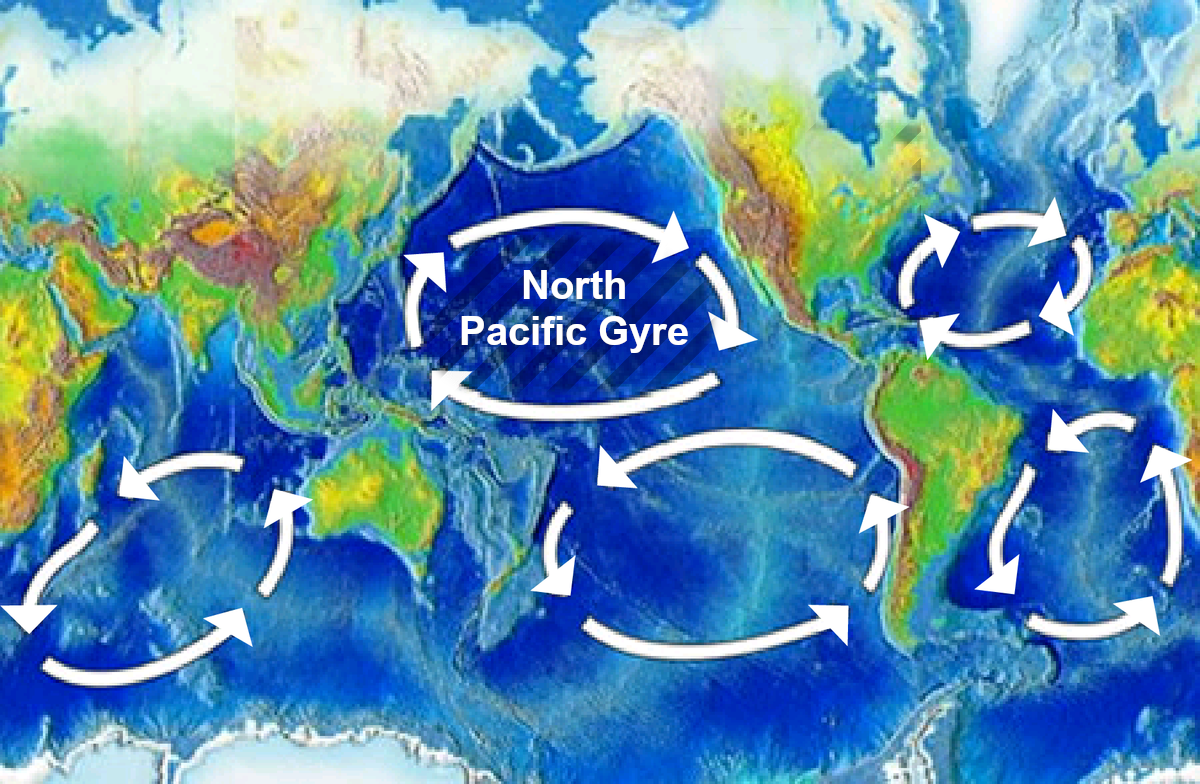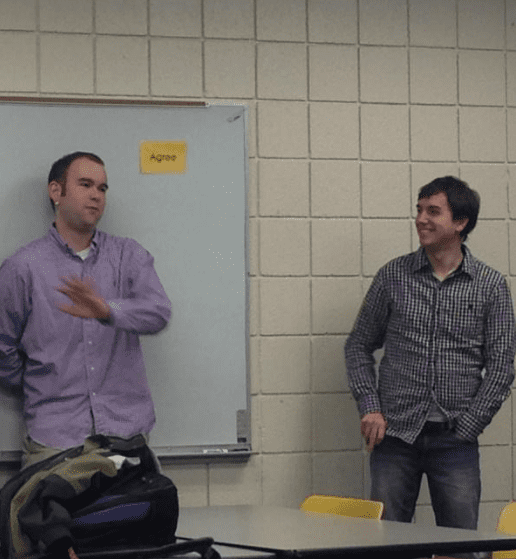We know educators are always looking for easy-to-implement lessons that will make a big impact. This type of ready-made lesson is especially lifesaving if you are short on time (ahem… lesson planning the night before…) or short on energy (…always…). But unfortunately, when teacher burnout hits, it’s not always as easy as turning to the Internet. Sometimes a basic Google search is more overwhelming than the planning itself.
If making it through the next few months of lesson planning feels daunting, we’re here for you. These six lessons pack a big punch (fun! interesting! meaningful!), are standards-aligned, require few (if any) materials, and are easy to prepare — even if you’re lesson planning the night before.
So don’t let teacher burnout win. Use the links below to download these six free lesson plans now!
1. Lesson Plan: Crowding Can be Seedy (grades K-2)
 Got some string lying around? If so, you’ve got everything you need to do the interactive lesson Crowding Can Be Seedy. In this activity, the string transforms into a ‘flower pot’ and your students are the seeds who ‘plant’ themselves inside. With the help of a fun poem, the seeds grow into flowers (students stand up and pretend to be a growing plant). By starting with one student in the ‘pot’ and slowly adding more and more ‘seeds,’ students see what happens when lots of plants have to share a small space. The lesson is a great reinforcement for basic science concepts like what living things need to survive and the parts of a plant, but can also launch more in-depth conversations about sharing limited resources among plants, animals, or humans.
Got some string lying around? If so, you’ve got everything you need to do the interactive lesson Crowding Can Be Seedy. In this activity, the string transforms into a ‘flower pot’ and your students are the seeds who ‘plant’ themselves inside. With the help of a fun poem, the seeds grow into flowers (students stand up and pretend to be a growing plant). By starting with one student in the ‘pot’ and slowly adding more and more ‘seeds,’ students see what happens when lots of plants have to share a small space. The lesson is a great reinforcement for basic science concepts like what living things need to survive and the parts of a plant, but can also launch more in-depth conversations about sharing limited resources among plants, animals, or humans.
NGSS standard met: Use a model to represent the relationship between the needs of different plant or animals (including humans) and the places they live.
2. Lesson Plan: Autobiography Map (grades 3-9)
The creative lesson plan Autobiography Map integrates art, promotes social emotional learning, and reinforces geography skills of map-making. Students consider their past, their current lives, and their future goals to create an “autobiography island map.” Students’ islands should include symbolic representations reflecting their life, as well as map features like a key, compass, and title. Use the handy printable worksheet to guide students’ thinking, as well as the included rubrics for personal review and final assessment.
C3 Framework standard met: Construct maps and other graphic representations of both familiar and unfamiliar places.
3. Lesson Plan: Population Riddles (grades 3-12)
Looking for a way to help students grasp the concept of exponential growth? Or want to help wrap your students minds around large numbers like a million or a billion? With a good bit of shock factor, Population Riddles will help students master abstract but important math concepts. Sneak peek into these fun math riddles: If you have 1 cent on the first day of the month, but you double that every day, you will end up with over 10 million dollars on the last day of the month!
Common Core math standard met: Solve real-life and mathematical problems using numerical and algebraic expressions and equations.

4. Lesson Plan: The Geography of Ocean Currents (grades 6-8)
This robust lesson from Nat Geo – The Geography of Ocean Currents – requires minimal preparation but offers loads of content. Students first learn about ocean currents through discussion and images, and then conduct research to see how ocean currents relate to things like the Great Pacific Garbage Patch and ocean spills. Links for maps, images, and articles for research are provided. Be sure to check out the tab for ‘Background’ to get key vocabulary words and additional resources.
C3 Framework standard met: Analyze relationships and interactions within and between human and physical systems to explain reciprocal influences that occur among them.
5. Lesson Plan: Take a Stand (grades 6-12)
 Teaching students to identify a position on complex topics and defend their thinking using evidence is key in civic education. Tackling this can sound daunting. But with pre-written statements that touch on a variety of important topics like energy use, wealth inequality, and migration, the lesson Take a Stand makes it easy for students to dive in. Here’s how it works: before students arrive, simply hang five signs around your classroom that read Strongly Agree, Agree, ???, Disagree, and Strongly Disagree. Pick a statement from the lesson to read aloud, and ask students to stand under the sign that best matches how they feel about the issue. Then encourage students to share their thinking. After the activity, have students conduct research on the topic so that they can prepare for an informed debate where they will defend their position with evidence. If their stance changes during their research, that’s okay!
Teaching students to identify a position on complex topics and defend their thinking using evidence is key in civic education. Tackling this can sound daunting. But with pre-written statements that touch on a variety of important topics like energy use, wealth inequality, and migration, the lesson Take a Stand makes it easy for students to dive in. Here’s how it works: before students arrive, simply hang five signs around your classroom that read Strongly Agree, Agree, ???, Disagree, and Strongly Disagree. Pick a statement from the lesson to read aloud, and ask students to stand under the sign that best matches how they feel about the issue. Then encourage students to share their thinking. After the activity, have students conduct research on the topic so that they can prepare for an informed debate where they will defend their position with evidence. If their stance changes during their research, that’s okay!
NGSS standard met: Construct, use, and/or present an oral and written argument supported by empirical evidence and scientific reasoning to support or refute an explanation or a model for a phenomenon or a solution to a problem.
6. Lesson Plan: Modern Globalization and Its Effects: Interactive Lesson (grades 6-12)
Need a lesson that students can complete 100% on their own? Check out this online interactive from PBS Learning – Modern Globalization and Its Effects. Simply grab the link to share with students, and that’s it! The lesson walks students through the basics of globalization and then focuses on the essential question, “To what extent do the benefits of modern globalization outweigh its negative effects?” Students consider the production of the classic Converse sneaker to help them identify the pros and cons of globalization and then write a thesis statement with supporting evidence.
C3 Framework standard met: Use economic indicators to analyze the current and future state of the economy.
More Easy Lessons and Activity Videos
Feeling less stressed already? We hope so. For more classroom-ready, easy-to-implement lessons that are sure to keep your students engaged, check out the Population Education lesson finder. Searching lessons by grade, subject area, topic, or type will make it easy to find an activity that meets your needs. And to make facilitating PopEd lessons even easier, check out these lesson plan demo videos. Demo videos explain the lesson procedure, highlight discussion you could have with students and outline possible assessments.
So, if you’re suffering from teacher burnout, remember… you don’t have to reinvent the wheel, you just have to know where to look!
Image credits: North Pacific Gyre (North Pacific Gyre World Map by Fangz is Public Domain)


